A Guide to Low Waste Backpacking
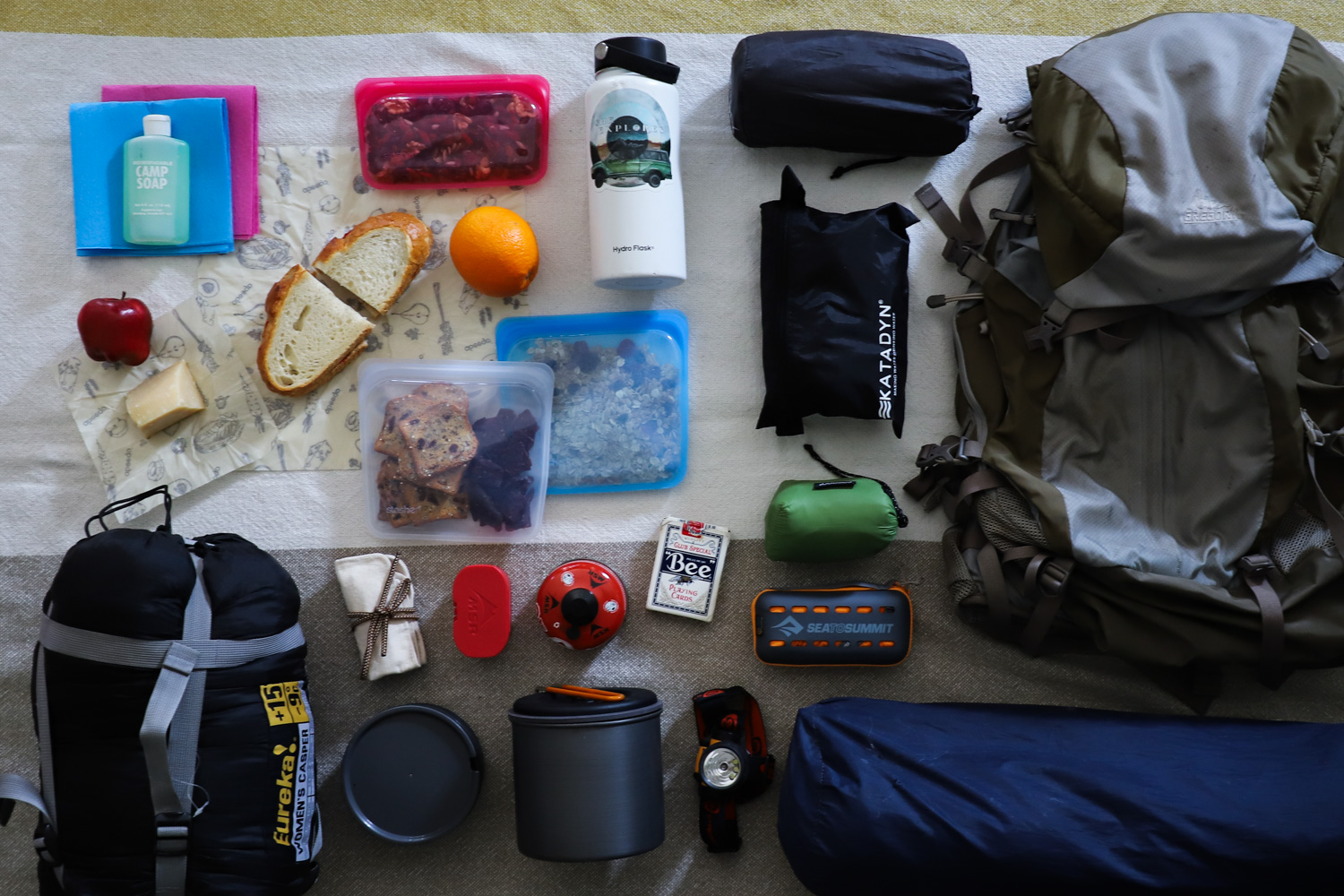
by Hailey Hirst
It’s true that backpacking is inherently low waste. Because you can only pack what you can carry, your life is condensed to the bare minimum basics: shelter, food, water, warmth. But products made for the sake of convenience: Pre-packaged granola bars, backpacking meals, single-use coffee packs, individually-wrapped bug repellant wipes, that travel-size tube of toothpaste… these things add up.
My great grandmother is famous in my family for hauling a cast iron skillet on a backpacking trip. She made breakfast from scratch and packed extra weight so the lake trout would brown perfectly over a campfire. Meanwhile, I can peel open a backpacking meal and add water that I brought to a boil ridiculously fast on a tiny stove. Aren’t we spoiled these days?
Things may be easier with ultralight packs and high-tech gear, but lately I’ve been feeling like this pre-packaged style of convenience backpacking isn’t all it’s cracked up to be.
Even when I’m packing out trash and leaving the backcountry as I found it, it feels a little contradictory to unload my pack and send a wad of wrappers and packages to the landfill after I’ve been so immersed and connected with nature.
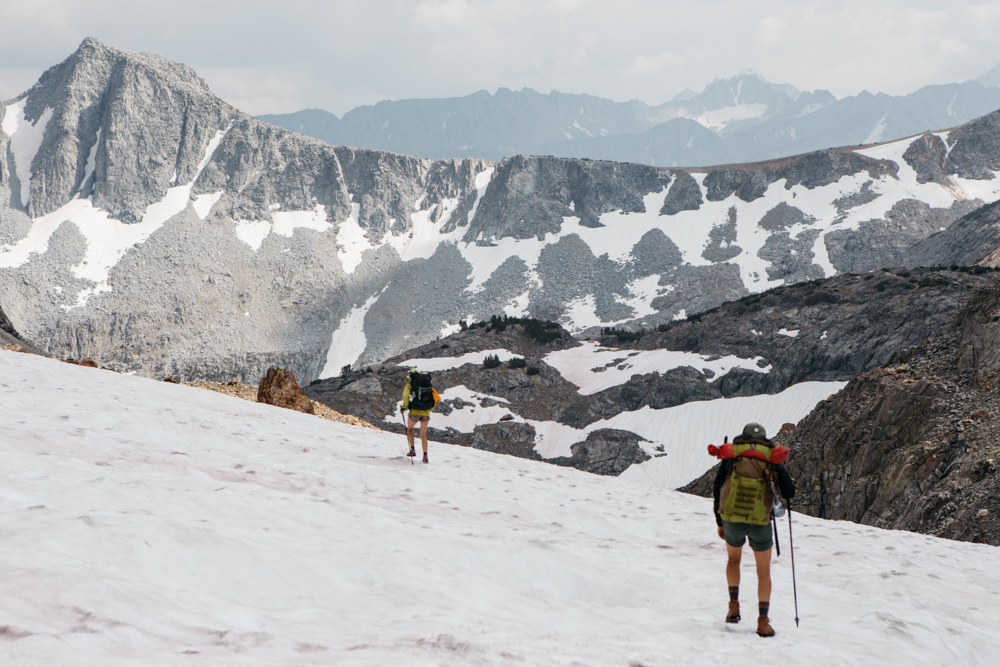
High among the peaks at McGee Pass in the Sierra — photo by Gale Straub
I’m not an expert lightweight backpacker, nor do I live a truly “zero waste” lifestyle, but this my honest, researched attempt to plan a backpacking season with less single-use plastic.
It’s worth acknowledging that it’s a privilege to invest time in trip planning and money in reusable gear, and it’s a choice that not every outdoors person can or will make—and that’s okay. As much as I’m writing from my own experience and goals, I respect that other people will make different choices that are right for themselves. Not going low-waste doesn’t mean people are doing it wrong. But if you are interested in reducing your use of disposables and single-use plastics… here are a few tips for low(er) waste backpacking:
Meal Planning and Prep
Meals
Not only are homemade backpacking meals less expensive than the pre-packaged ones, but there’s also a good chance they’ll taste better, too. Going low waste has multiple perks.
I’m guilty of often opting for a Mountain House meal on overnight trips but I’m trying to think outside the box (plastic bag) this year. Thanks to resources like Fresh Off the Grid and other backpacking blogs, I feel like the leap to DIY backpacking meals won’t be a difficult one. I like to cook at home anyway.
Best practice is to buy in bulk and prepare what you can at home so cooking in the backcountry is as simple (and fast) as possible. This might mean using/borrowing/buying a food dehydrator, or finding already-dehydrated ingredients.
Some staples:
- Quick oats
- Nuts or nut butters
- Couscous or other pasta
- Minute rice
- Hard cheese
- Dry cured meats
- Freeze dried fruits and vegetables
- Dehydrated beans or meat
Some recipes:
- Red Lentil Chile via Fresh Off the Grid
- Couscous Curry via Wonderland Guides
- Backcountry Fried Rice via Fresh Off the Grid
- 7 DIY Dehydrated Meals for the Trail via the Hippy Homemaker
If you’d still like the convenience of a ready-to-go dehydrated meal, TrailFork offers backpacking meals in fully compostable packaging.
Snacks
Make your own:
Alternatively, buy your favorite snacks in bulk and store in reusable containers. Like: beef jerky, whole wheat crackers, trail mix, chocolate.
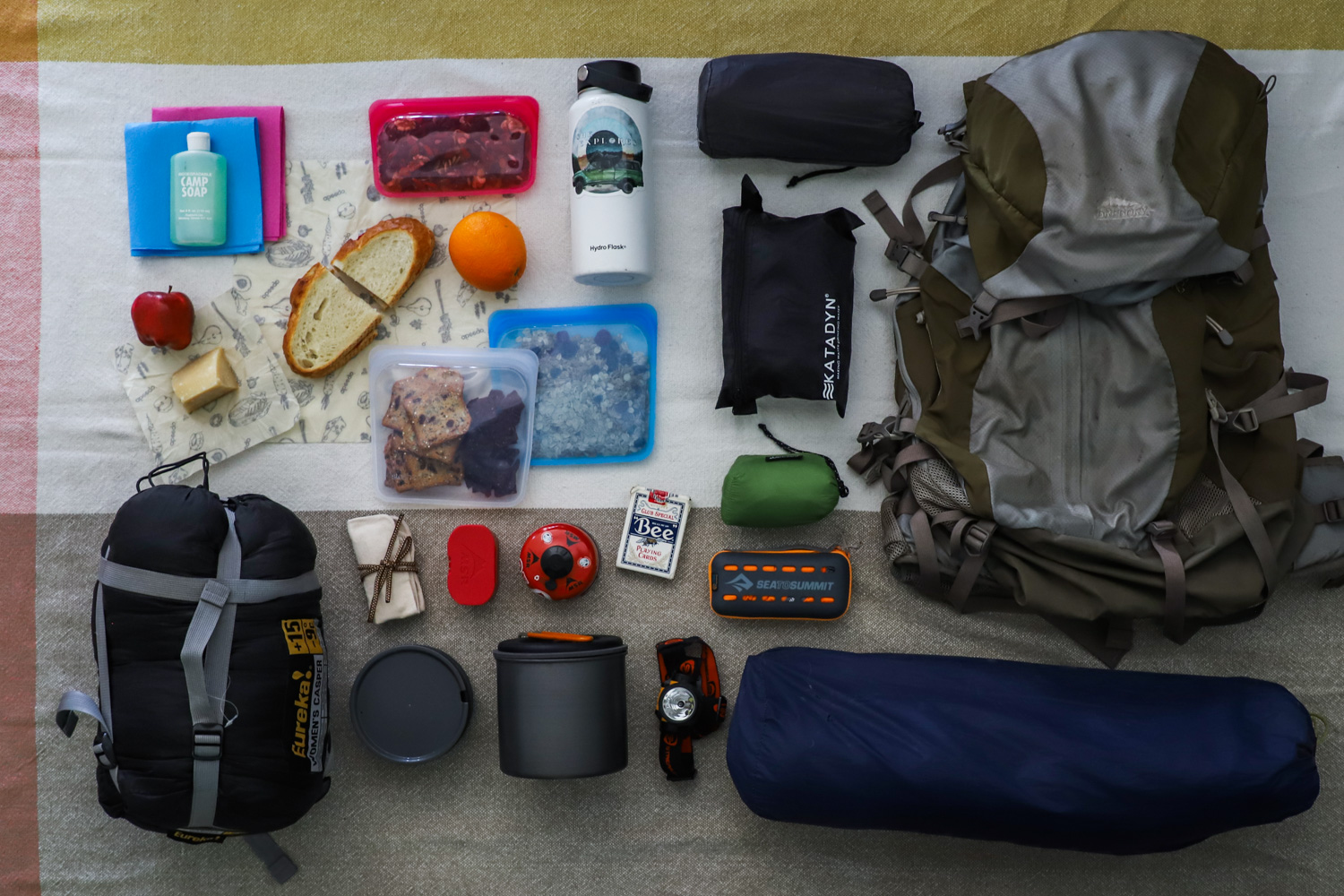
A simple pack for an overnight, including reusable paper towels, reusable containers and food wrap, along with the usual backpacking essentials — photo by Hailey Hirst
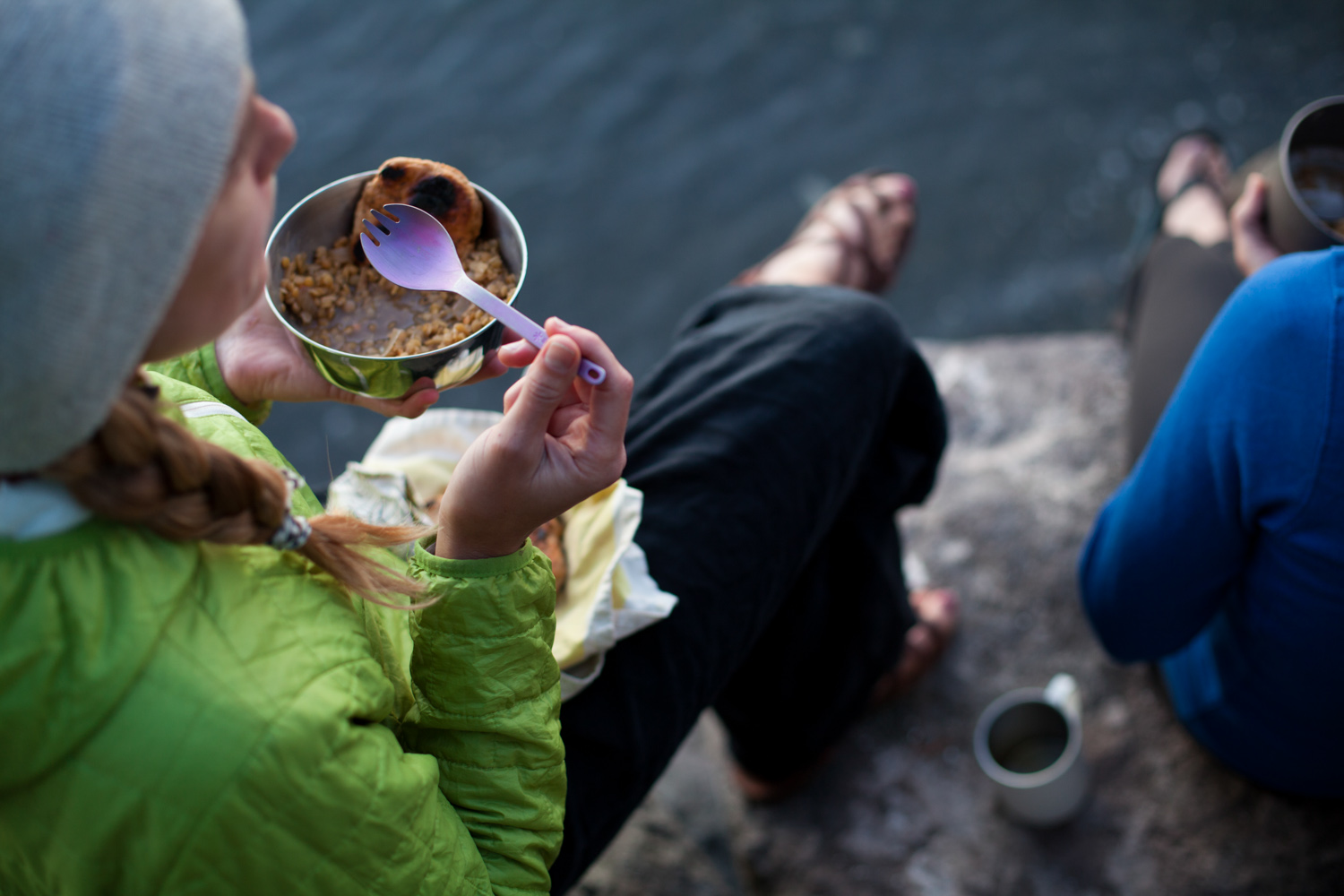
Anna Brones’ book Best Served Wild has more backcountry cooking tips and recipes — photo courtesy of Anna Brones
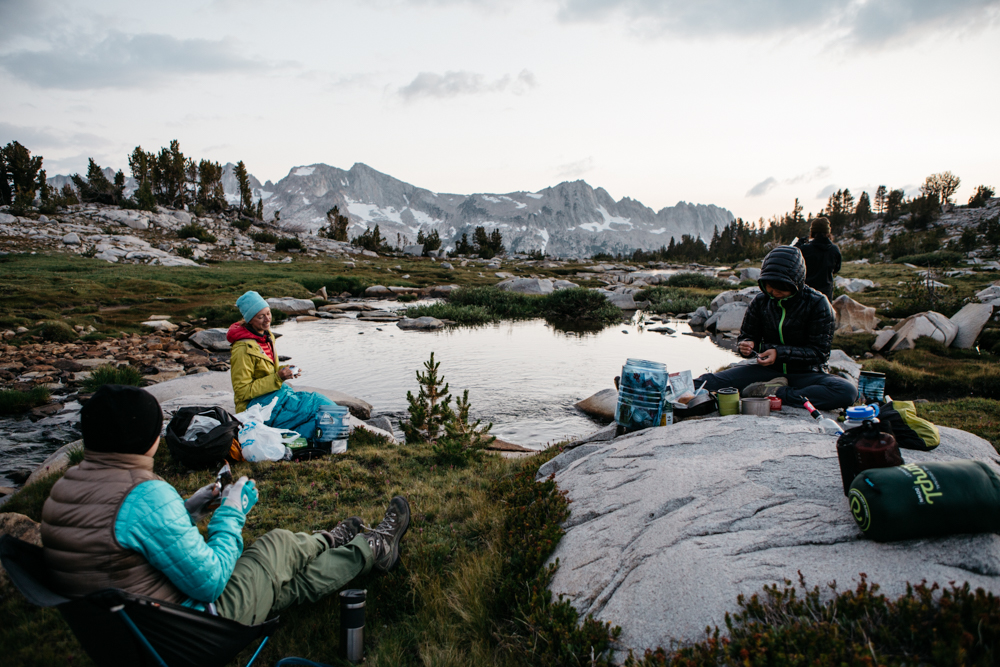
Sharing a meal with friends in the Sierra — photo by Gale Straub
Reusable containers
Food storage
The ziplock bag reigns supreme for its low weight and utility for a lot of backcountry meal prep, but there are much more eco-friendly options out there.
Some worthy alternatives:
- ReZip Reusable zip storage bags
- Lunchskins Reusable bags
- Abeggo Beeswax wraps
- I’ve been using these at home for two years and love them.
- Stasher Silicone bags
- These are a bit heavier than the first two listed options, but can also be used for rehydrating dried food since they’re heat tolerant silicone.
- Bear canisters
- Certain wilderness areas or national parks require you use a bear canister, and regardless of whether they are a requirement, they come in handy for food storage and bear safety.
If you have favorite reusable containers at home, they might work just fine in a backpack too. Some of your backpacking kitchen items might also double as storage. Can your cups or pot hold food? Load ’em up!
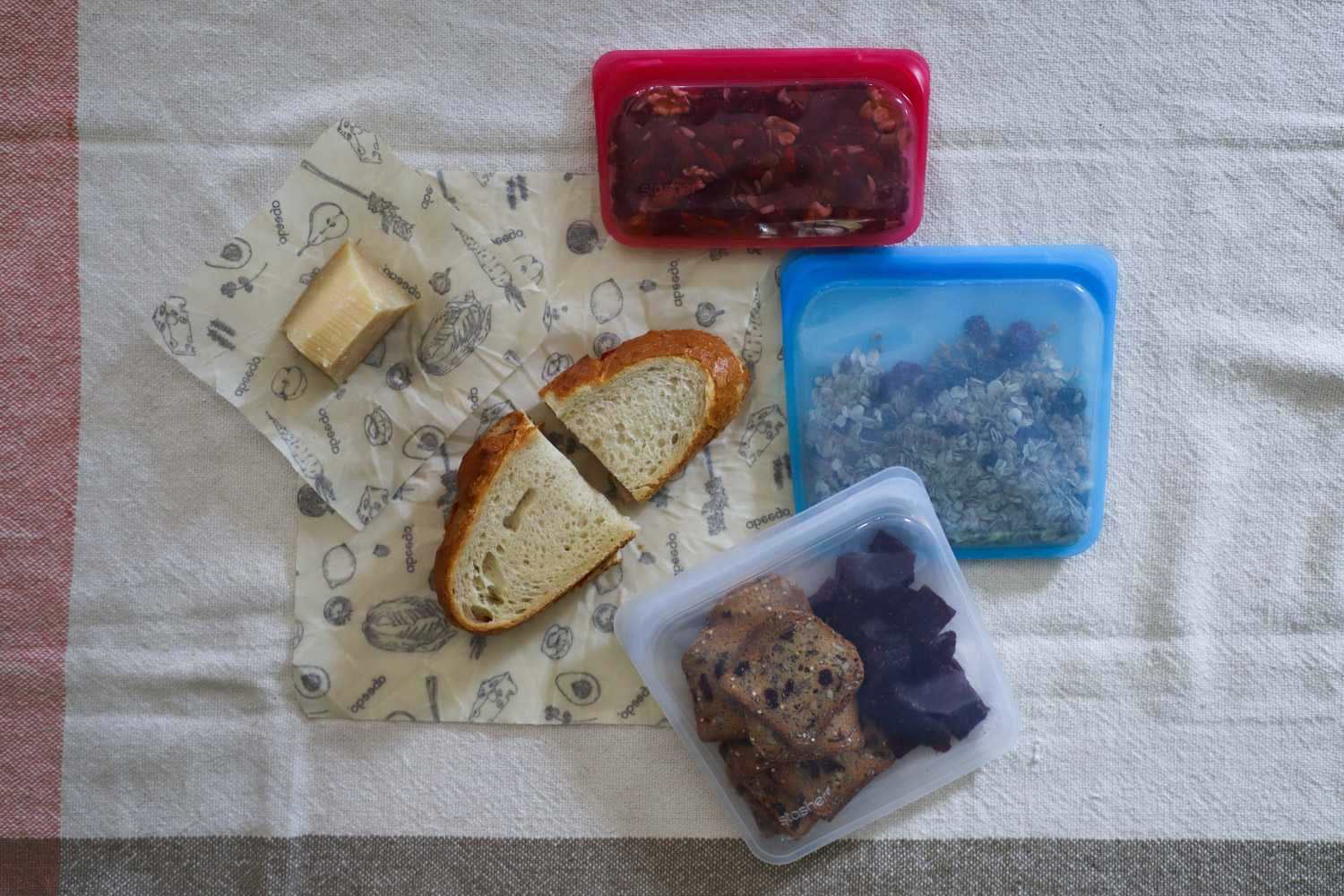
Beeswax wraps for cheese and a sandwich, and Stasher silicone bags to pack trail mix, oatmeal with dried fruit, and crackers and jerky — photo by Hailey Hirst
Drink Storage
- Water — your favorite bottle will do. This is my go-to.
- Wine will travel and keep well in this collapsible bag.
- Liquor can fit in your favorite flask, or a lighter weight small Platypus bag.
Liquid containers — for food, cleaning, bug, and body products
To store:
- Olive oil
- Hot sauce
- Liquid soap
- DEET repellant
- Sunscreen
- Alcohol hand sanitizer
These all are great options:
- Goob tubes
- Nalgene mini bottle set
- Gossamer Gear Dropper bottles
- These bottles are ideal for storing bug repellant, among other things!
- Snack spot with a view
- Reflecting — photos by Gale Straub
Dealing with Human Waste
Use a p cloth for #1. And follow LNT guidelines for your cat hole, or pack out #2 if you’re in a sensitive environment and/or heavily used recreation area. Always pack out toilet paper and hygiene products.
Hate packing out used tampons? Consider using a menstrual cup if you’re dealing with a period while backpacking. It’s not something to try for the first time ever in the backcountry, but it’s a great low-waste alternative to disposable products when you’re out there.
Finally, bring along a trash bag for any waste or trash you make or find along the way.
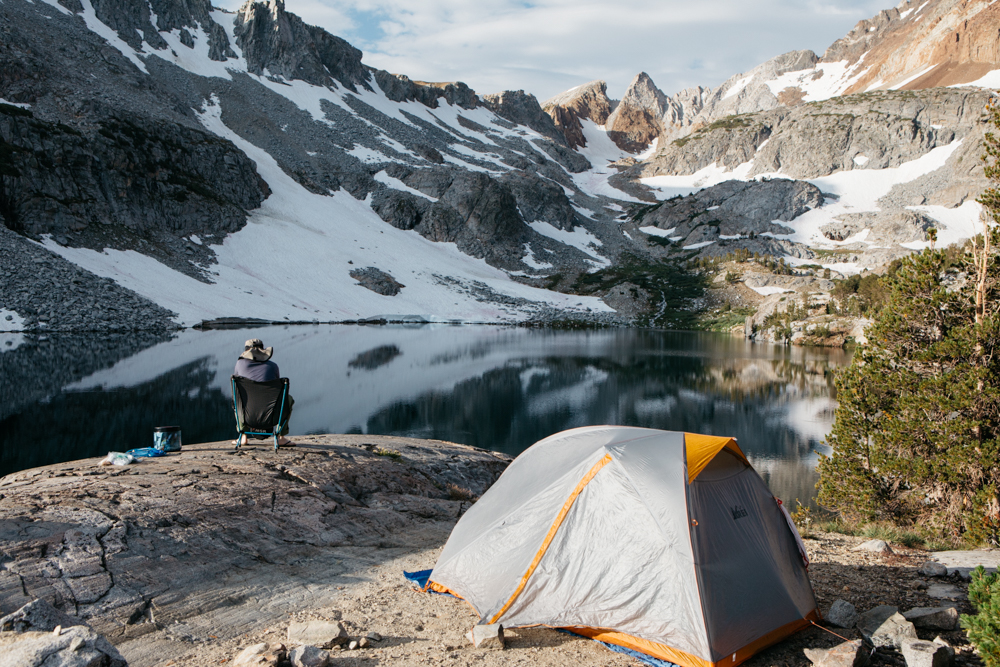
Calm at camp after a long day on the trail — photo by Gale Straub
Takeaways
Trying to live more minimally is more work at home, and the same goes for backpacking. It requires supplies, planning, and preparation. But don’t we backpack for the effort and experience anyway?
I like the intentionality of leaning towards a lower-waste version of backpacking. Even though it appears complicated to gather ingredients and really consider every container, it feels like a simplification.
I could be my great grandmother in 1981, grating potatoes at camp for a morning breakfast or cooking lake trout with tiny bottles of olive oil and lemon juice. Unlike her, though, I won’t be hauling a cast iron pan or a cotton sleeping bag on my next backpacking trip.
Do you have other tips for minimizing waste while backpacking?
Photos courtesy of Gale Straub, Anna Brones, and Hailey Hirst
Note: This article contains Amazon affiliate links. When you purchase through a link, we earn a small commission at no cost to you. Thank you for your support!


Thank you, was helpful
Awesome tips! Thanks for sharing!